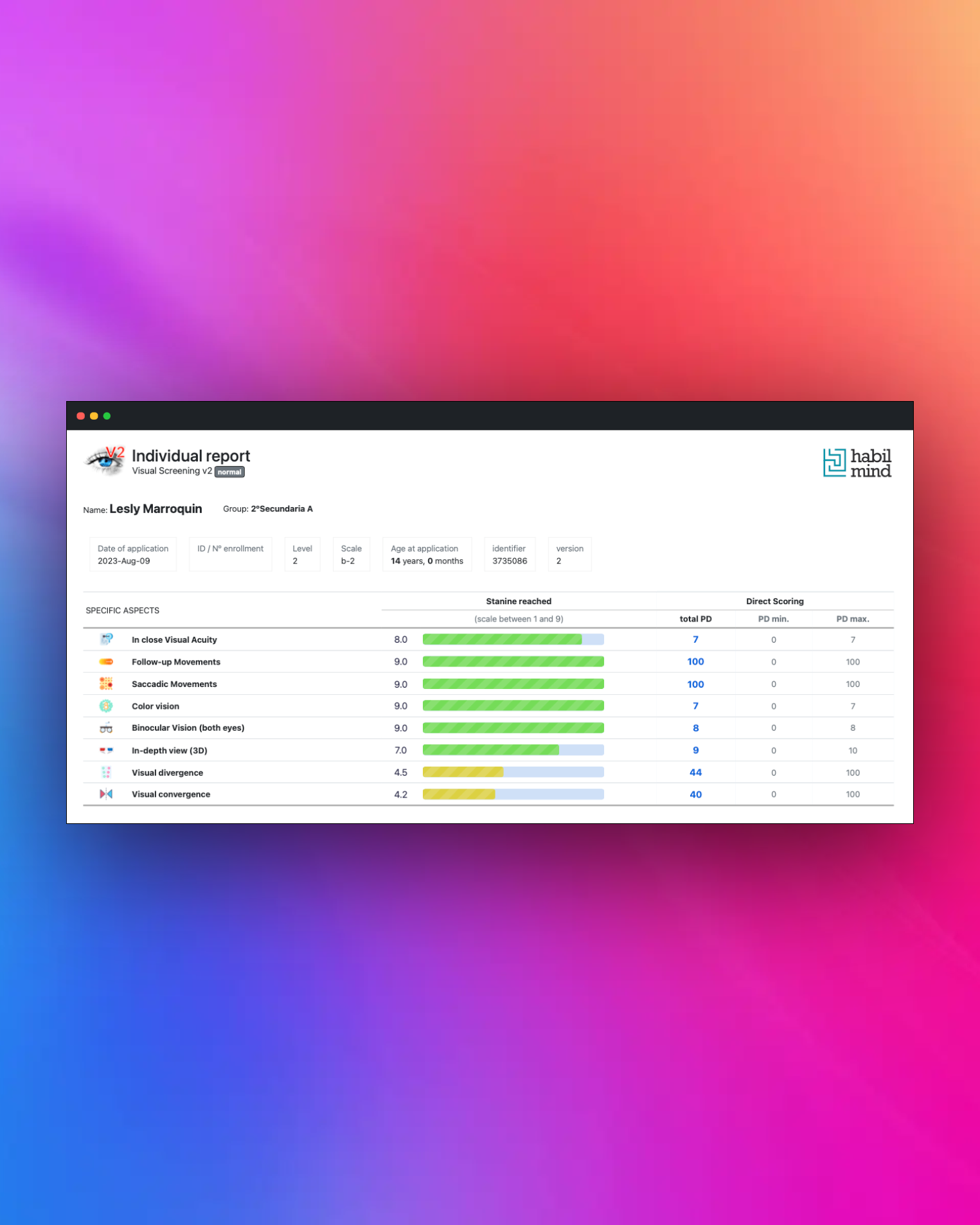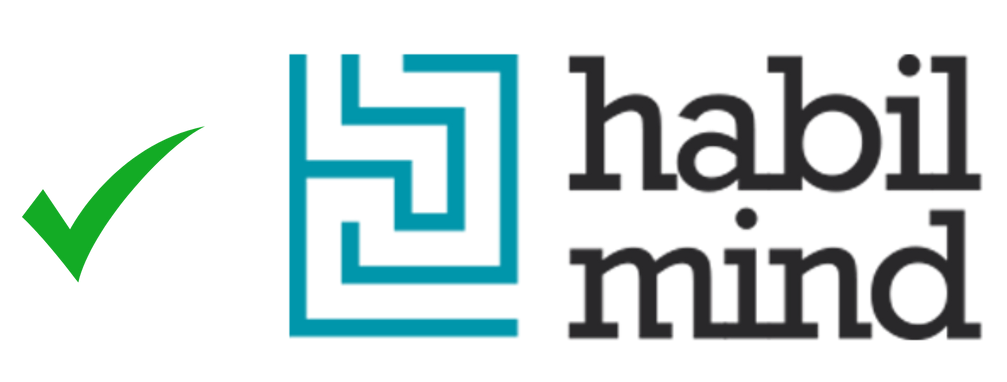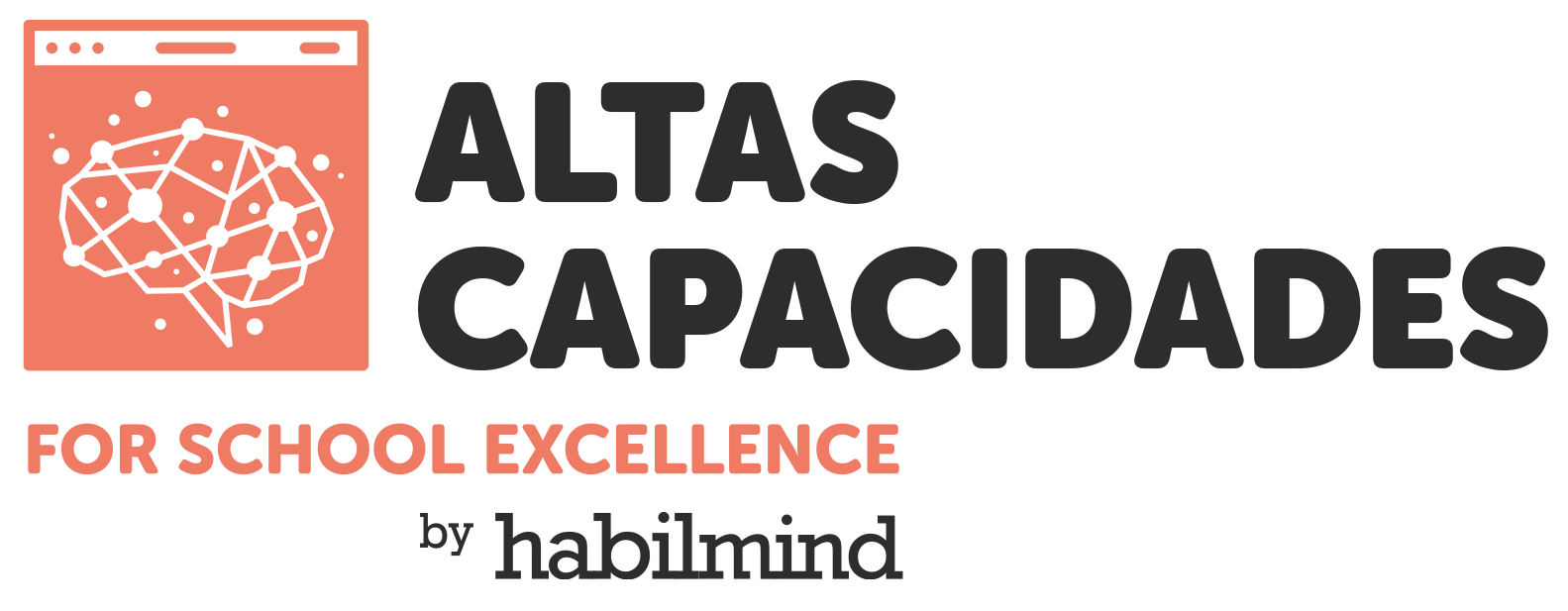Habilmind > Related to Students' Academic Performance > Visual Screening
Visual Screening
Optometric indicators that influence learning
Assessment of essential optometric factors related to learning.
ℹ️Application: Collective
🕓Duration: 15 minutes
✅Applicable age: 5 years and above
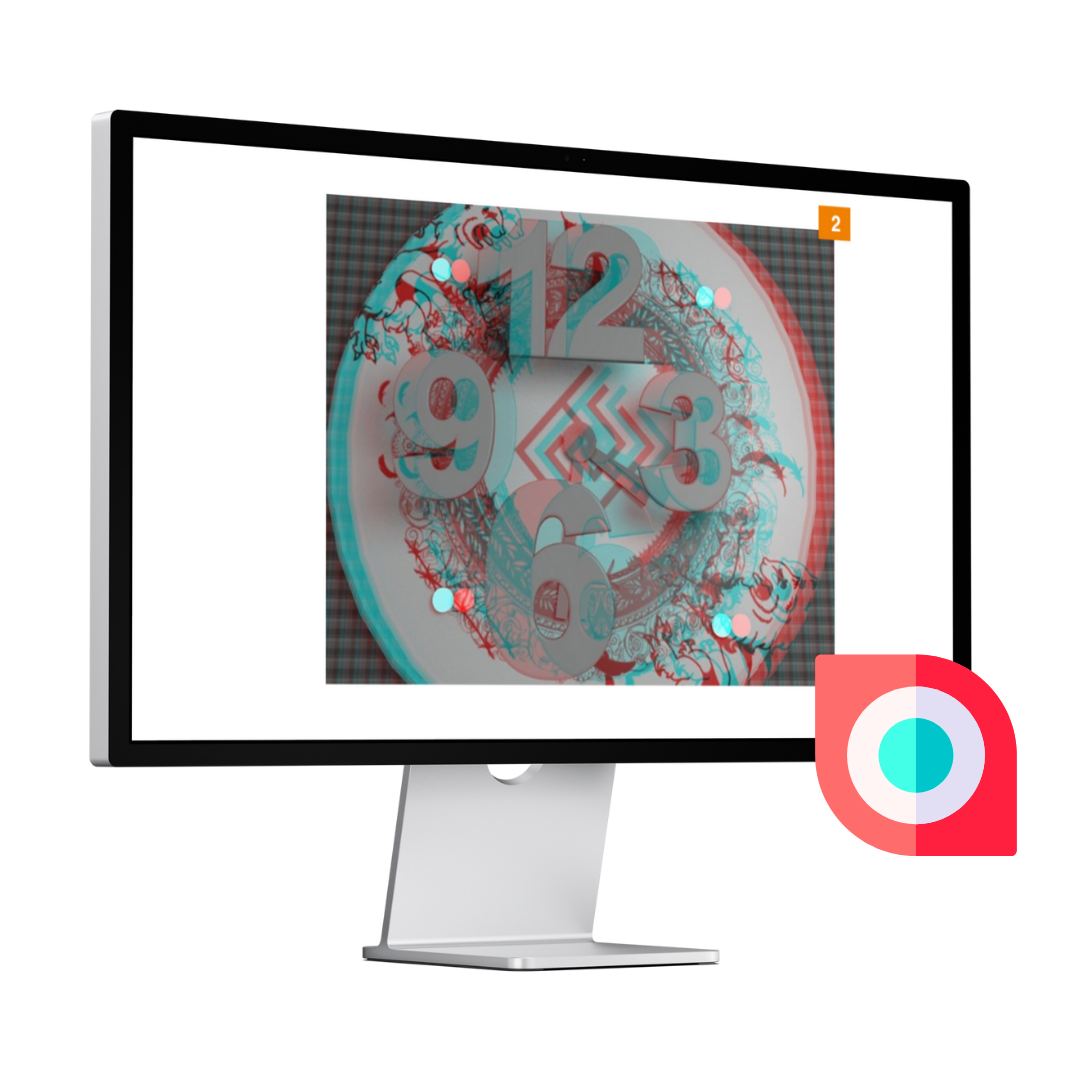
Authors

Arancha Rioja
Author of the Visual Screening, the most widely used online optometric screening test.
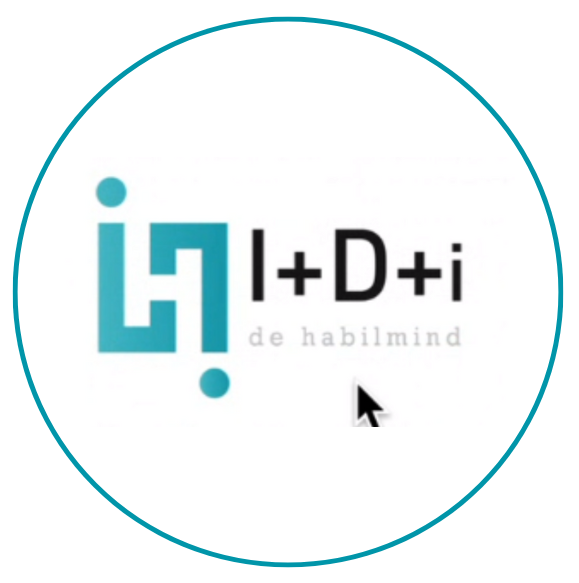
Habilmind R&D&I Team
Habilmind team dedicated to educational innovation.
What does your school obtain from this tool?
01
Provide
Information on key visual skills for learning.
02
Identify
Possible visual impairments.
03
Intervene
Proactively.
04
Prevent
Academic difficulties.
05
Assess the impact
Through the re-administration of the tool.
Problems you prevent (or mitigate) when using Visual Screening
1. Difficulties in reading and comprehension: Early detection of visual problems can prevent reading and comprehension difficulties, as poor vision may affect a student’s ability to process and understand text.
2. Attention problems in the classroom: Undiagnosed visual issues can lead to eye strain and difficulties in maintaining attention, impacting academic performance and causing demotivation.
3. Difficulties in writing and motor coordination: Untreated visual impairments can affect a student’s ability to write legibly and perform tasks requiring fine motor coordination, potentially lowering self-esteem and motivation.
4. Social and emotional development: Early detection and correction of visual problems can prevent social isolation and low self-esteem associated with unidentified learning difficulties, enabling students to fully participate in academic and social activities.
On which platforms of the Habilmind Ecosystem
is this tool available?
Visual Screening Test Explanation by Arancha Rioja
Video in which Arancha Rioja explains Visual Screening.
Useful Links
Authors
Review the contribution of the featured author and the R&D team in the development of the Visual Screening test. Read more
Check prices and benefits instantly
Use the “Prices” button to view the available plans and choose the one that best suits your school.
Free trials are available for schools, colleges, institutes, universities, clinical psychologists, and researchers.






